Published by Periplus Editions (HK) Ltd. www.periplus.com Copyright 2002 Periplus Editions (HK) Ltd. All rights reserved. The publisher would like to thank the following for the use of their tableware: Asean Designers, KLCC, pgs (bowl & plate). All shops in KLCC, Malaysia. ISBN: 978-1-4629-1106-6 (ebook)
Jl.
Rawa Gelam IV No. 9
Jakarta 13930, Indonesia
Tel: 62 (21) 4682 1088; Fax: 62 (21) 461 0206.
crm@periplus.co.id
www.periplus.co.id Photography: Suan I. Lim.
Food Styling: Rohani Jelani.
Recipe Tester: Wendy Hutton
Design: Periplus Design Team 15 14 13 12 11 8 7 6 5 4 3 2
Basic Indonesian Ingredients

Banana leaves infuse a delicate flavor and aroma to foods and are used as wrappers when steaming or grilling dishes, or as little trays to hold food when cooking. Soften the leaves slightly in boiling water before use to prevent them from cracking when folded.

Candlenuts are waxy, straw-colored nuts that are ground to add texture and flavor to spice pastes and curry mixtures.

Cardamom pods are used to flavor curries and dessertsgiving foods a heady, sweet scent.

Cardamom pods are used to flavor curries and dessertsgiving foods a heady, sweet scent.
The fibrous, straw-colored pods enclose 15-20 pungent black seeds. The pods should be bruised lightly with a cleaver or a pestle when used whole. Do not substitute ground cardamom as it is virtually flavorless compared to the pods. Chilies are indispensable in Indonesian cooking and many different varieties are used. The large, red finger-length chili is the most common and is moderately hot. Dried red chilies of this variety are ground to make chili flakes or ground red pepper.
Tiny red, green or yellow-orange bird' seye chilies are very hot and are used in soups, curries and sauces. They are also available dried.  Chinese celery is much smaller and has thinner stems than the normal Western variety, with a very intense, parsley-like flavor. The leaves and sometimes the stems are added to soups, rice dishes and stir-fried vegetables. Use Italian parsley or celery leaves as a substitute. Coconut cream or coconut milk is widely used in Asian sauces and desserts.
Chinese celery is much smaller and has thinner stems than the normal Western variety, with a very intense, parsley-like flavor. The leaves and sometimes the stems are added to soups, rice dishes and stir-fried vegetables. Use Italian parsley or celery leaves as a substitute. Coconut cream or coconut milk is widely used in Asian sauces and desserts.
While freshly pressed coconut milk has more flavor, coconut cream and milk are now available in cans and carton packets that are quick and convenient to use. Consistencies vary from brand to brand, so use your judgment and dilute with water as needed. Thick coconut milk is obtained from coconut cream by diluting it by half with water; and thin coconut milk is half again as diluted as thick milk.  Cumin seeds are pale brown to black and usually partnered with coriander seeds in basic spice mixes. They impart an intense earthy flavor to foods.
Cumin seeds are pale brown to black and usually partnered with coriander seeds in basic spice mixes. They impart an intense earthy flavor to foods.  Dried shrimp paste, known by its Indonesian name, trasi or by its Malay term, belacan, is a dense mixture of fermented ground prawns that must be toasted before useeither wrapped in foil and dry-roasted or toasted over a gas flame on the back of a spoon.
Dried shrimp paste, known by its Indonesian name, trasi or by its Malay term, belacan, is a dense mixture of fermented ground prawns that must be toasted before useeither wrapped in foil and dry-roasted or toasted over a gas flame on the back of a spoon.  Fennel seeds are larger and paler than cumin seeds, with a sweet flavor similar to anise.
Fennel seeds are larger and paler than cumin seeds, with a sweet flavor similar to anise.  Fennel seeds are larger and paler than cumin seeds, with a sweet flavor similar to anise.
Fennel seeds are larger and paler than cumin seeds, with a sweet flavor similar to anise.
They add a sweet fragrance to Indian and Indonesian dishes.  Galangal is an aromatic root used throughout most of Southeast Asia, known as lengkuas in Singapore and Malaysia, as laos in Indonesia, and as kha in Thailand. The fresh root can be sliced and frozen for future use. It is available fresh in most large supermarkets. Glass noodles, also known as cellophane noodles, tang hoon or bean threads, are thin transparent noodles made from mung bean flour. They are sold in dried form and must be soaked in warm water to soften before use.
Galangal is an aromatic root used throughout most of Southeast Asia, known as lengkuas in Singapore and Malaysia, as laos in Indonesia, and as kha in Thailand. The fresh root can be sliced and frozen for future use. It is available fresh in most large supermarkets. Glass noodles, also known as cellophane noodles, tang hoon or bean threads, are thin transparent noodles made from mung bean flour. They are sold in dried form and must be soaked in warm water to soften before use.
Use rice vermicelli as a substitute.  Kaffir lime leaves are used in soups and curries of Thai, Malay or Indonesian origin. They are also thinly sliced and used as a garnish. Buy them fresh or frozen or driedthe fresh or frozen leaves are much more fragrant.
Kaffir lime leaves are used in soups and curries of Thai, Malay or Indonesian origin. They are also thinly sliced and used as a garnish. Buy them fresh or frozen or driedthe fresh or frozen leaves are much more fragrant.  Kangkung is a highly nutritious vegetable also known as water spinach or water convolvulus. Young shoots are served as part of a mixed platter of raw vegetables for dipping in hot sauces, while the leaves and tender tips are often stir-fried.
Kangkung is a highly nutritious vegetable also known as water spinach or water convolvulus. Young shoots are served as part of a mixed platter of raw vegetables for dipping in hot sauces, while the leaves and tender tips are often stir-fried.
Kencur or aromatic ginger is sometimes mistakenly called "lesser galangal" although its correct English name is zedoary. This ginger-like root has a unique camphor flavor and should be used sparingly. Wash it and scrape off the skin before using. Dried sliced kencur or kencur powder can be used as a substitute. Soak dried slices in boiling water for approximately 30 minutes; use -l teaspoon of powder for 1-inch fresh root.  Lemon basil (daun kemanggi) is a lemon-scented herb added to dishes at the last minute to keep its flavor, or used as a garnish.
Lemon basil (daun kemanggi) is a lemon-scented herb added to dishes at the last minute to keep its flavor, or used as a garnish.  Lemon basil (daun kemanggi) is a lemon-scented herb added to dishes at the last minute to keep its flavor, or used as a garnish.
Lemon basil (daun kemanggi) is a lemon-scented herb added to dishes at the last minute to keep its flavor, or used as a garnish.

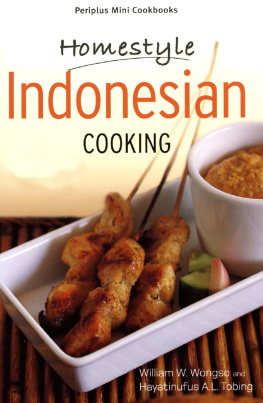
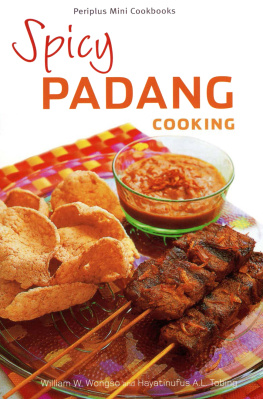
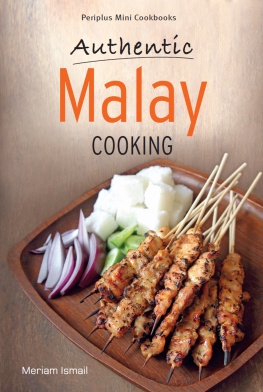

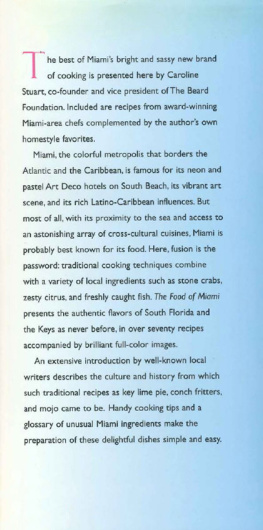
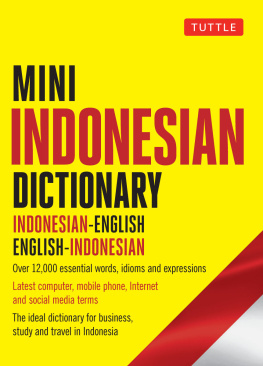
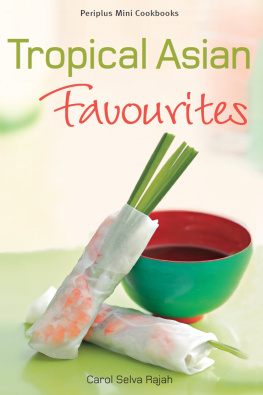
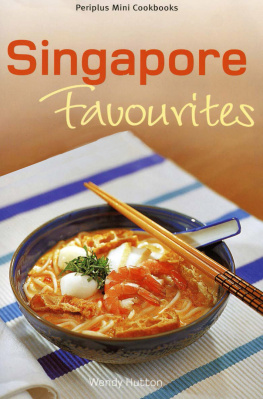



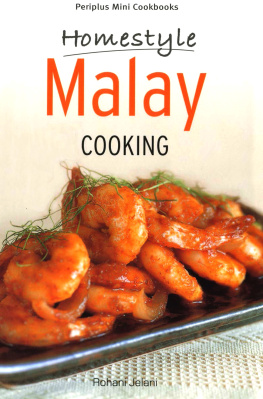


 Published by Periplus Editions (HK) Ltd. www.periplus.com Copyright 2002 Periplus Editions (HK) Ltd. All rights reserved. The publisher would like to thank the following for the use of their tableware: Asean Designers, KLCC, pgs (bowl & plate). All shops in KLCC, Malaysia. ISBN: 978-1-4629-1106-6 (ebook)
Published by Periplus Editions (HK) Ltd. www.periplus.com Copyright 2002 Periplus Editions (HK) Ltd. All rights reserved. The publisher would like to thank the following for the use of their tableware: Asean Designers, KLCC, pgs (bowl & plate). All shops in KLCC, Malaysia. ISBN: 978-1-4629-1106-6 (ebook)
 Banana leaves infuse a delicate flavor and aroma to foods and are used as wrappers when steaming or grilling dishes, or as little trays to hold food when cooking. Soften the leaves slightly in boiling water before use to prevent them from cracking when folded.
Banana leaves infuse a delicate flavor and aroma to foods and are used as wrappers when steaming or grilling dishes, or as little trays to hold food when cooking. Soften the leaves slightly in boiling water before use to prevent them from cracking when folded.  Candlenuts are waxy, straw-colored nuts that are ground to add texture and flavor to spice pastes and curry mixtures.
Candlenuts are waxy, straw-colored nuts that are ground to add texture and flavor to spice pastes and curry mixtures.  Cardamom pods are used to flavor curries and dessertsgiving foods a heady, sweet scent.
Cardamom pods are used to flavor curries and dessertsgiving foods a heady, sweet scent.  Chinese celery is much smaller and has thinner stems than the normal Western variety, with a very intense, parsley-like flavor. The leaves and sometimes the stems are added to soups, rice dishes and stir-fried vegetables. Use Italian parsley or celery leaves as a substitute. Coconut cream or coconut milk is widely used in Asian sauces and desserts.
Chinese celery is much smaller and has thinner stems than the normal Western variety, with a very intense, parsley-like flavor. The leaves and sometimes the stems are added to soups, rice dishes and stir-fried vegetables. Use Italian parsley or celery leaves as a substitute. Coconut cream or coconut milk is widely used in Asian sauces and desserts. Cumin seeds are pale brown to black and usually partnered with coriander seeds in basic spice mixes. They impart an intense earthy flavor to foods.
Cumin seeds are pale brown to black and usually partnered with coriander seeds in basic spice mixes. They impart an intense earthy flavor to foods.  Dried shrimp paste, known by its Indonesian name, trasi or by its Malay term, belacan, is a dense mixture of fermented ground prawns that must be toasted before useeither wrapped in foil and dry-roasted or toasted over a gas flame on the back of a spoon.
Dried shrimp paste, known by its Indonesian name, trasi or by its Malay term, belacan, is a dense mixture of fermented ground prawns that must be toasted before useeither wrapped in foil and dry-roasted or toasted over a gas flame on the back of a spoon.  Fennel seeds are larger and paler than cumin seeds, with a sweet flavor similar to anise.
Fennel seeds are larger and paler than cumin seeds, with a sweet flavor similar to anise.  Galangal is an aromatic root used throughout most of Southeast Asia, known as lengkuas in Singapore and Malaysia, as laos in Indonesia, and as kha in Thailand. The fresh root can be sliced and frozen for future use. It is available fresh in most large supermarkets. Glass noodles, also known as cellophane noodles, tang hoon or bean threads, are thin transparent noodles made from mung bean flour. They are sold in dried form and must be soaked in warm water to soften before use.
Galangal is an aromatic root used throughout most of Southeast Asia, known as lengkuas in Singapore and Malaysia, as laos in Indonesia, and as kha in Thailand. The fresh root can be sliced and frozen for future use. It is available fresh in most large supermarkets. Glass noodles, also known as cellophane noodles, tang hoon or bean threads, are thin transparent noodles made from mung bean flour. They are sold in dried form and must be soaked in warm water to soften before use. Kaffir lime leaves are used in soups and curries of Thai, Malay or Indonesian origin. They are also thinly sliced and used as a garnish. Buy them fresh or frozen or driedthe fresh or frozen leaves are much more fragrant.
Kaffir lime leaves are used in soups and curries of Thai, Malay or Indonesian origin. They are also thinly sliced and used as a garnish. Buy them fresh or frozen or driedthe fresh or frozen leaves are much more fragrant.  Kangkung is a highly nutritious vegetable also known as water spinach or water convolvulus. Young shoots are served as part of a mixed platter of raw vegetables for dipping in hot sauces, while the leaves and tender tips are often stir-fried.
Kangkung is a highly nutritious vegetable also known as water spinach or water convolvulus. Young shoots are served as part of a mixed platter of raw vegetables for dipping in hot sauces, while the leaves and tender tips are often stir-fried. Lemon basil (daun kemanggi) is a lemon-scented herb added to dishes at the last minute to keep its flavor, or used as a garnish.
Lemon basil (daun kemanggi) is a lemon-scented herb added to dishes at the last minute to keep its flavor, or used as a garnish.